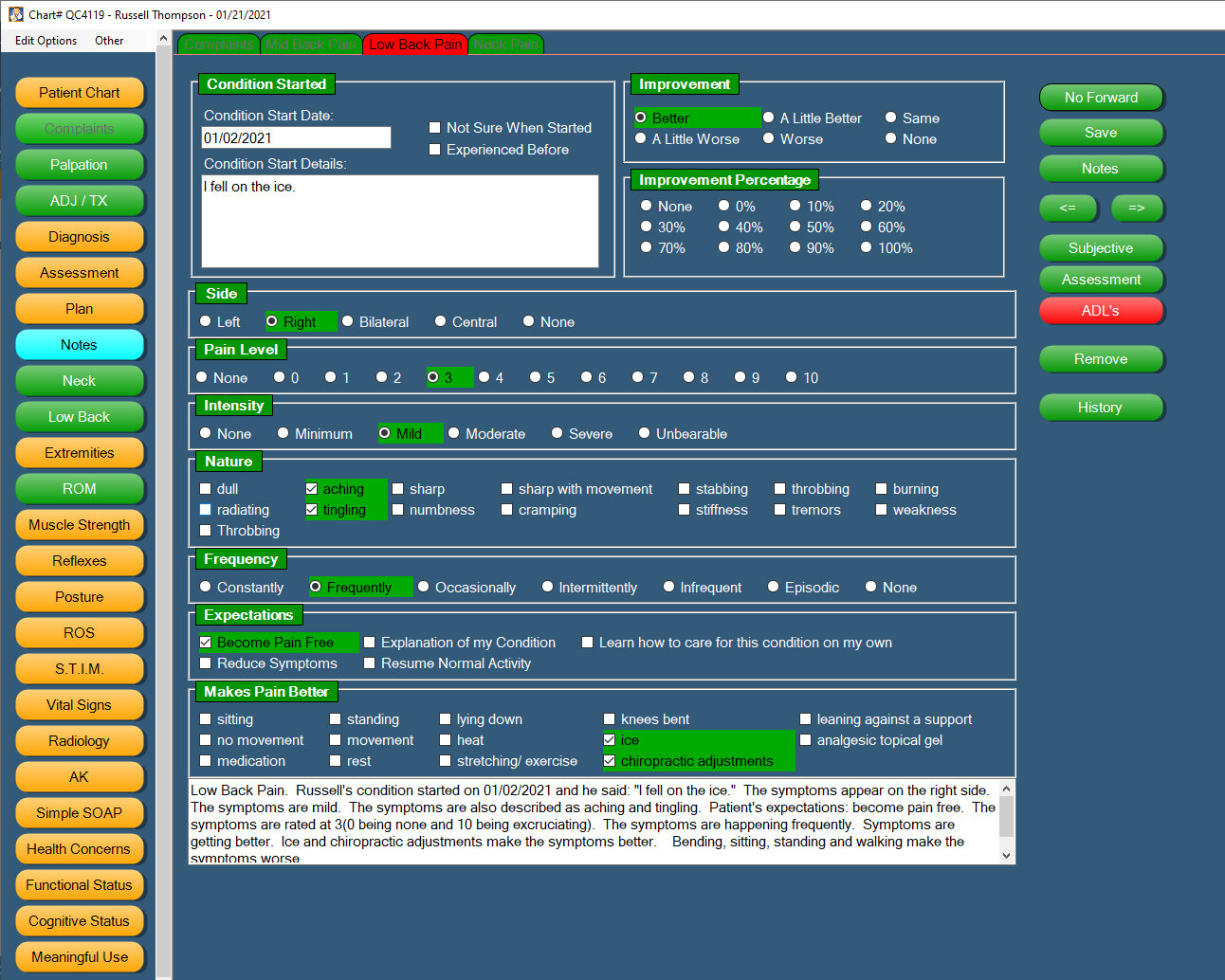In the healthcare industry, the terms Electronic Health Records (EHR) and Electronic Medical Records (EMR) are often used interchangeably, yet they represent different concepts and functionalities. Understanding the differences between EHR and EMR is crucial for healthcare providers to make informed decisions about the digital tools they use. This article will explore the key distinctions between EHR and EMR systems, shedding light on their unique features and how they impact patient care and practice management. Chiropractors that behave more like those in mainstream medicine will fit in more effectively into the market that all health care providers must deal with. Those that review your records will see that your records look like the records of other health care professionals.

What is an Electronic Medical Record (EMR)?
An Electronic Medical Record (EMR) is a digital version of a patient’s medical history as maintained by a single practice. EMRs typically include information such as diagnoses, treatments, vaccination dates, allergies, and test results from one practice. The primary function of an EMR is to track patient data over time, identify patients due for checkups or preventive screenings, and monitor how patients measure up to certain parameters, such as vaccinations and blood pressure readings.
One of the key characteristics of EMRs is that they are generally used within a single practice. They are not designed to be shared outside the individual practice. For instance, if a patient switches to a different healthcare provider, their EMR may not be easily transferable, often requiring the patient’s records to be printed out and physically delivered to the new provider.
What is an Electronic Health Record (EHR)?
Electronic Health Records (EHR), on the other hand, are designed to collect and compile information from all the clinicians involved in a patient’s care. EHRs are intended to provide a more comprehensive view of a patient’s health by integrating data from multiple sources. This can include a broader history than what is found in an EMR, such as information about patient care from different healthcare providers, labs, and specialists.
The most significant advantage of EHRs is their ability to be shared with other healthcare providers, allowing for more coordinated and efficient patient care. EHRs facilitate better health outcomes by providing a patient’s complete health picture at the point of care and enabling quick access to patient records for more informed decision-making. They also support other care-related activities, such as evidence-based decision support, quality management, and outcomes reporting.
Key Differences Between EHR and EMR
The primary difference between EHR and EMR lies in the scope and depth of the data they contain and their interoperability. While EMRs are mostly confined to a single practice’s records and are not built for sharing outside that practice, EHRs encompass a more comprehensive patient history and are designed to be shared with other healthcare providers for more holistic care.
Another key distinction is in their functionality and end goal. EMRs are mainly used for diagnosis and treatment within a single practice. EHRs, however, go beyond the standard clinical data collected in a provider’s office and are more focused on the total health of the patient. They are aimed at improving the overall quality, safety, and efficiency of health care delivery.
Choosing Between EHR and EMR for Your Practice
When deciding whether to implement an EHR or EMR system, healthcare providers should consider their specific needs and the needs of their patients. For practices that require comprehensive patient records from various sources and aim to provide coordinated care across different healthcare settings, an EHR system would be more beneficial. However, for practices that only need digital records for internal use and patient management within their own office, an EMR system might suffice.
In conclusion, while EHR and EMR systems both play crucial roles in modernizing healthcare records, their differences are significant. Understanding these differences is essential for healthcare providers to choose the right system that best suits their practice’s needs and enhances their ability to provide high-quality patient care. As the healthcare industry continues to evolve, the distinction between EHR and EMR becomes more relevant in the pursuit of more efficient, effective, and patient-centered healthcare.

Empower your practice! Get a Free Demo Today!
Experience the power of a personalized demo with our expert software developer. Discover how Quick Charts can revolutionize your chiropractic practice with its seamless integration of cutting-edge technology. From simplified patient management to advanced analytics, our software empowers you to take your practice to new heights. Don’t miss out on the opportunity to see firsthand how Quick Charts can transform your workflow and enhance patient care. Schedule your demo today.
Contact Us
"*" indicates required fields

